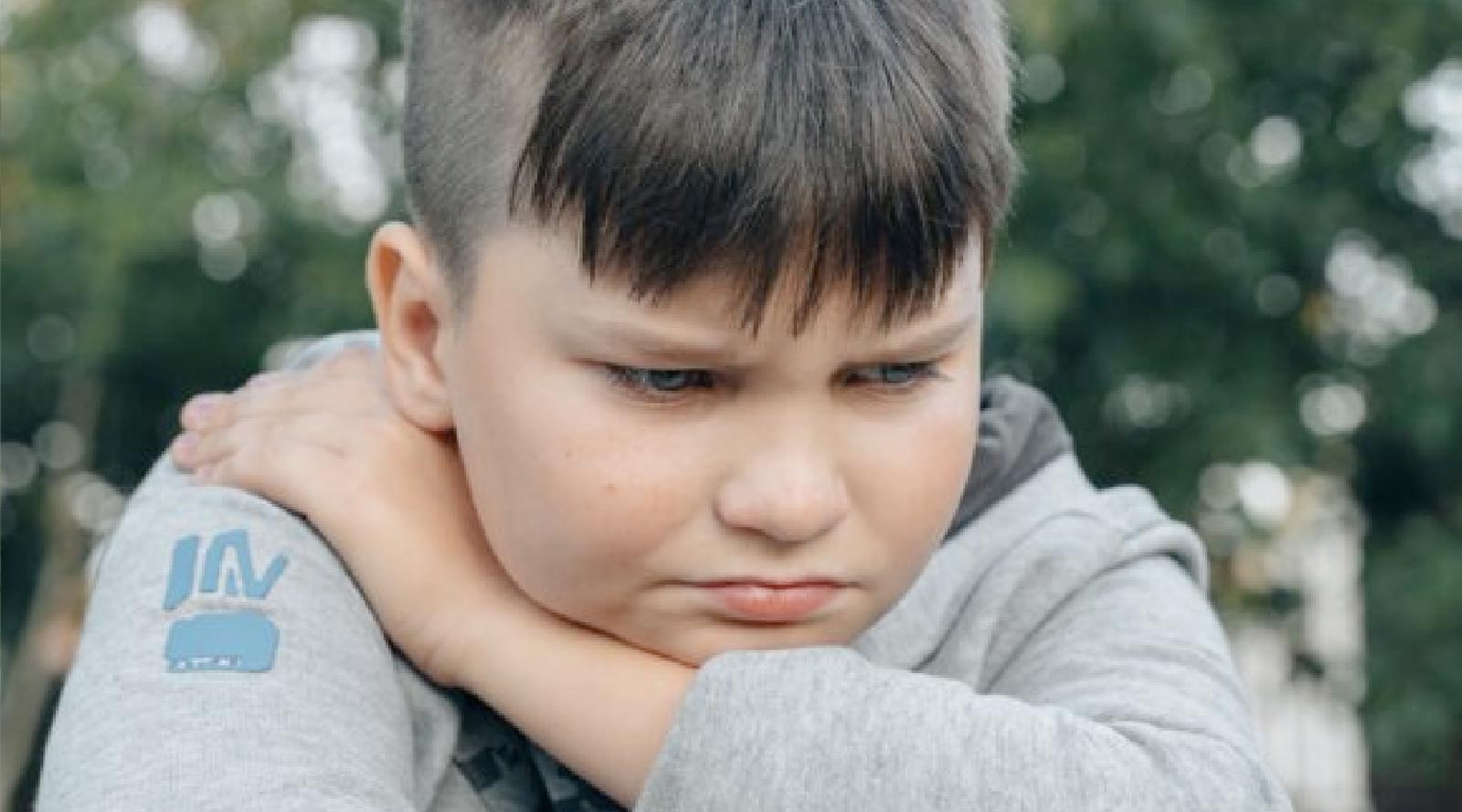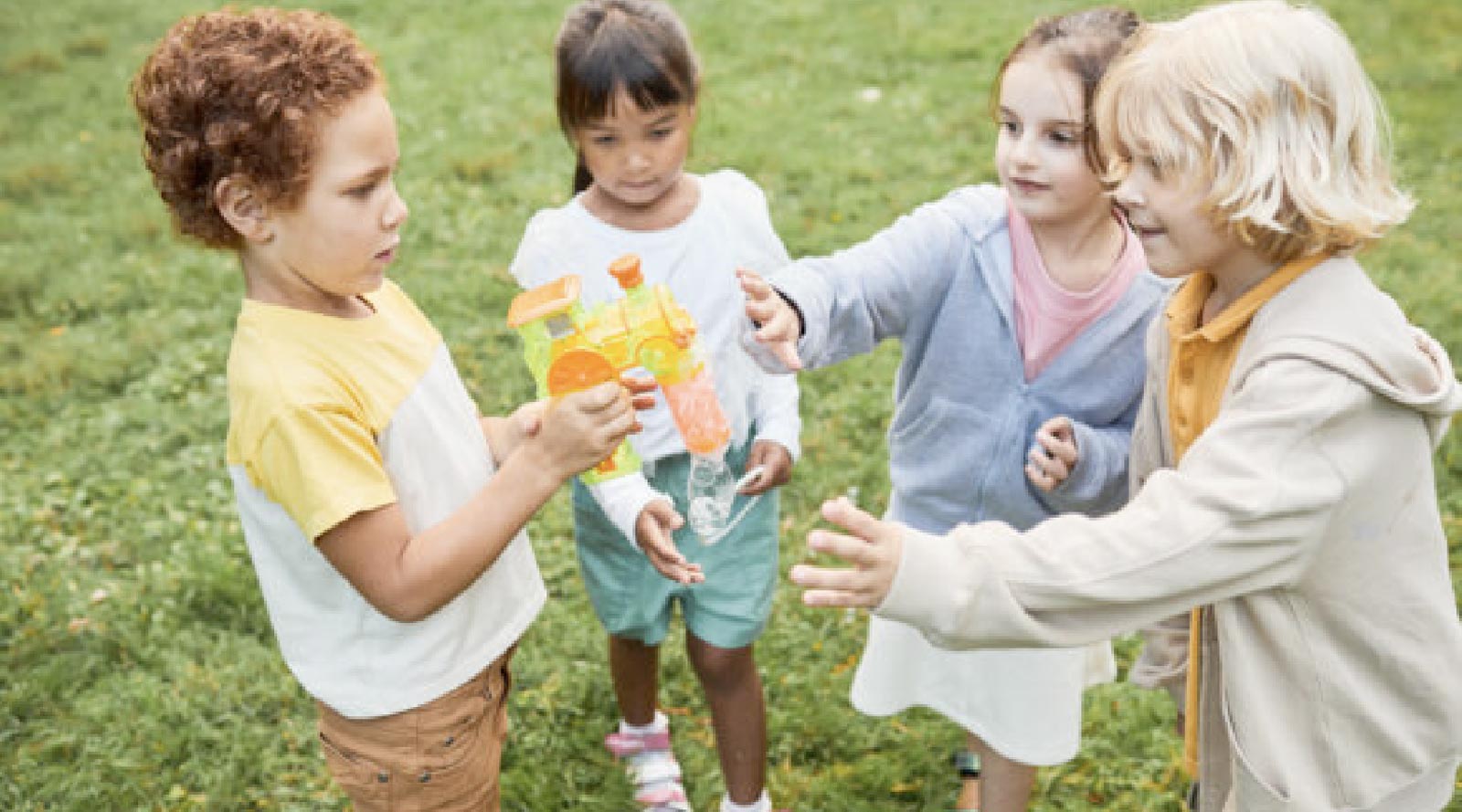From Fear to Love: A New Understanding of Trauma and Behavior in Adopted Children
The mom texted me in a state of distress. Three of her adopted children had been out on the trampoline playing. The twelve-year-old boy told the nine-year-old boy that he should pull down his sister’s pants, she being eleven. She said she didn’t want him to do that and didn’t want to play anymore. She went into the house and told her mom. This mom has been through the ringer this year. She has five grown biological children and six adopted children. Her husband passed away unexpectedly just this past January. She has been working through her grief, trying to be a mom to children with exceptional needs, and simply just trying to hold it together. In the midst of all of this she has also been trying to learn a new paradigm for parenting that I refer to as love-based parenting, and it is not easy.
Mom texted, “I called them all up and told Sam how dumb that was to tell his brother to do that. I told him that he could get in a lot of trouble telling his autistic little brother to pull down people’s pants. He got mad, went outside and grabbed a shovel, and went behind my car. I took it from him and put it in the garage. I told him to leave the shovel alone and to stay away from my car. I then went inside and started dinner. He came inside the house and grabbed a knife and said that I wanted to cut his hands off because he had stolen from me (This was from an incident weeks prior.). I told him that was not true but I did want him to stop stealing. He then proceeded to scare his brother and sister. I brought them into the living room and sat with them to start a movie.
He later told me that I chose them over him. I told him that I was comforting them because they were crying and were scared. That night he purposely left the garage door open and let a wild animal come into the garage and eat all of the cat food. I had to go get food the next day. Then I noticed the deep scratch he made in my car. He denies it was him but he blinks when he is lying. He can’t stop blinking. I am so frustrated.”
Navigating thru Fear to Find Love
Scenarios like these are common for me. Over twenty years of working with families in their homes focused on stress, trauma, and attachment I think I have seen every behavior and trauma imaginable. Currently, I am directing a wraparound program for adoptive families in Northern California. We have one overarching goal: To reduce the parent’s stress while helping them learn how to be therapeutically available to their children. Helping reduce their stress is the easy part, helping them learn how to be therapeutically available, now that’s the challenge. I call it learning how to parent from love rather than fear. Most of the time parents have no idea that their approach as well as what they are encouraged to do by well-meaning professionals is creating more stress and fear, diminishing the presence and opportunity for love. When this happens, I say, “Children grow older, but not better.” If you’ve been in counseling for over a year and you are still searching for help and support, then you are experiencing exactly what I am talking about.
In 1999 I coined a theory of human behavior called The Stress Model. The Stress Model states that “All behavior arises from a state of stress and in between the behavior and the stress is the presence of a primary emotion. There are only two primary emotions: Love and Fear. It is through the expression, processing, and understanding of the fear that we can calm the stress and diminish the behavior.” This model is dynamic in nature in that when the child is misbehaving, their behavior is coming from stress and generating fear, but the stress and the fear trigger the stress and fear of the parent which subsequently drives the parent’s behavior. When you fully understand the stress model it can be transformative to your life, home, and relationship with your child.
In this article I am going to give you three different parenting perspectives to illustrate the above scenario: 1. Traditional “Fear” Based Perspective: This is the most common; Stress Model “Fear” Based Perspective: This is the second most common and steeped in good intention, and Stress Model “Love” Based Perspective: By far the most challenging and least common, yet most powerful and effective based on my twenty-years.
Let’s get started.
Traditional Fear-Based Perspective
Upon hearing what Sam has told his brother to do, mom becomes angry. “How dare you say something so inappropriate to your sister. That is disgusting. Have you tried to do this before?” Before Sam can respond, she screams, “Your grounded. Go to your room.” Sam gets mad and goes outside. His mother, now feeling disrespected because he has ignored her, and not wanting the other children to think she doesn’t have control, goes outside after him. She yells again, “I told you to go into your room. Don’t you ignore me?” Upon seeing the shovel, she moves toward him and grabs it. He automatically pulls back on it and they begin a tug-of-war. She is now irate and threatens him with more punishment. He releases the shovel and pushes it at the same time, mom falls backward, her head barely missing a concrete garden piece. Sam runs into the house. Now crying and feeling assaulted, helpless, and just unsure what to do, mom calls the police. The police arrive at a quiet scene but now they need to teach Sam a lesson, so they cuff him and put him in the back of the car. The other children are all standing outside crying. Mom is crying and feeling guilty. Sam is scared and crying (Quick Note: Sam may be crying and scared now but typical of extreme fear-based behavioral interventions, once used they lose their novelty, thereby causing the parents to have to become increasingly creative to equal the initial shock value. These approaches usually have varying impacts until pre-adolescence and then they just simply lose all effectiveness.) The neighbors have come out into their yards to see what was going on. The cops finally release Sam and mom tells him to shower and go to bed. He still hasn’t had dinner.
Stress Model “Fear-Based” Perspective
Upon hearing what Sam has told his little brother to do, mom becomes agitated. She expels a deep breath of frustration and thinks to herself, “Ugghh here we go again. This kid. Jesus help me.” Mom calls them all up and tells Sam how dumb that was to tell his brother to do that. She informs him that he could get in a lot of trouble telling his autistic little brother to pull down people’s pants. Sam gets mad, and goes outside, grabs a shovel, and walks behind the car. Mom takes the shovel and puts it in the garage. Telling Sam to leave the shovel alone and to stay away from her car. Mom then goes inside and starts preparing dinner. Sam inside the house, grabs a knife and says that his mom wants him to cut his hands off because he has stolen from her (This was from an incident a week prior.). She tells him this is not true, but she does want him to stop stealing. Sam then proceeded to scare his brother and sister. Mom gathers up the brother and sister protectively and sits with them on the couch and starts a movie for them.
Sam later tells mom that she chooses them over him. She tells him that she was comforting them because they were crying, and he was scaring them. That night mom believes Sam purposely leaves the garage door open and so wild animals can come into the garage and eat all of the cat food. Again frustrated, mom must go get more cat food the next morning. Then she notices the deep scratch Sam made in the car the day before. Sam denies it was him, but he blinks when he is lying. He can’t stop blinking. Mom feels so frustrated and helpless.
Understanding Adoption and Trauma
It’s important here that we have a working definition for trauma. Colin Ross, M.D explains that trauma is any stressful event that is prolonged, overwhelming or unpredictable. When such events continue unexpressed, unprocessed, and misunderstood this forms the difference between a short-term stressful event and a potentially life and brain-altering traumatic event.
Adoption at any age is a traumatic event because it represents a biological disruption. The separation from the biological mother leaves an indelible imprint upon the child’s cellular experience, one from which he may never fully recover. And this is to say nothing of experiences such as physical, sexual and emotional abuse, abandonment, and alcohol and drug exposure that children may also have experienced. Adopted children can harbor layered trauma that few adoptive parents and professionals fully grasp.
These events may have happened in the past, but they’re still there in the brainstem, our brain’s a hard drive, like files that never get fully deleted. These files—these traumas— are stored away, just waiting to be accidently opened by various triggers, revealing a past experience of fear and pain that colors the lens of the person, thereby changing everything they see and hear in the new moment. Taking the new and making it old. Neuroscientist Bruce Perry refers to this as “States becoming traits of one’s personality.” States become activated when we reach a high level of stress. Therefore when we stress, we regress to earlier developmental experiences.
However, that’s only one side of the proverbial adoptive coin.
The other side is that of the adoptive parents themselves, many of whom have gone through an enormous emotional journey on their way to adoption. Some adoptive parents never had biological childrenand have grief around that; others have children born to them and also chose to adopt; some bring to parenting the experience of miscarriage and infertility. . And let us not forget that parents were once children, too, and we have our own files of subsequent experiences stored in the hard drive of our brains. Years and years of adulthood has sufficiently shielded the grown-up from accidentally opening her own files until alas, the adopted child enters the home.
When We Stress, We Regress
Sam has an extensive history of abuse and abandonment. He is emotionally immature and hard to connect to. He so wants to be loved but generally feels overwhelmed and therefore is overwhelmed. He was closer to his father who just died, now we have more overwhelm and abandonment. Sam simply doesn’t feel safe. His old trauma experiences keep telling him that disaster is impending. Disaster at this level of the brainstem is associated with fear and survival. When Sam becomes stressed, he becomes abused and neglected two-year-old and acts out accordingly.
Mom, on the other hand, was a parentified child who, though having grown up in a solid two-parent home, started taking care of her siblings at the age of seven so the parents could save money. She cooked, cleaned, did laundry, and basically acted as the house mama. At age seven! Today when mom gets stressed, she regresses to a parentified seven-year-old who is going to get into trouble if something goes wrong. Can you see how the conflict between Sam and mom can quickly escalate out of control?
This is a basic albeit critical understanding of the stress model. When parents become deeply aware of the role of how stress and trauma drive fear, then the focus becomes less on the behavior and more on soothing the stress and fear, but it starts with the parent.
Let’s take a look at it in action.
Stress Model “Love-Based” Perspective
Upon hearing of Sam’s statement to his brother (behavior), mom feels her anxiety rising. Initially she doesn’t say anything. She begins to take some deep breaths as she feels her old imprinting of “fear of getting in trouble” showing up. The old familiar story of the parentified child. In this particular moment mom also knows that Sam is probably freaking out and ready to feel rejected and get in trouble.
(Teaching Tip: There is no rush to do anything in this scenario. It has already happened. The inappropriate statement has already been made. The child at risk took the correct actions, and now there is a learning opportunity for the child and for mom.)
The longer mom waits the more time she gives herself to be in full control of your thoughts and emotions. From this place she can take responsibility and find empathy. She knows that she’s been tired and has given Sam very little attention over the past couple of days and he’s feeling it. Furthermore, they were out on the trampoline far too long. Mom knows that when they play together they have a pretty narrow window before the stress peaks and inappropriate behaviors are bound to happen. “When you stress, you regress,” thinks to herself.
After about three minutes mom calls both the boys into the house. She tells them to wash up and come into the kitchen and help her. She gives Sam a hug and says, “I love you. We are okay.” She feels Sam’s trembling body relax into her. They start helping. Mom, without looking at either of the boys says, “Hey guys you know it’s not okay to play any kind of games where someone is pulling someone else’s pants down, right?” Both boys reply with a “yes”. Mom asks if this has happened to either of you. And Sam pipes up that the boys at school have done it to him and then laughs. Mom stops what she is doing, gives Sam another hug and lets him know that she will go have a talk with the school principal the next day. She apologizes for not having gone to the school yet because she knows that he is often a target of bullying. Mom says to Sam, “If dad were still here he would have gone right up there and straightened them out, wouldn’t he?” She looks directly at Sam as tears well up in her eyes. Sam bursts into tears, squeezing his mom and can only shake his head “yes”.
Overcoming Fear to Find Love
Each of the three perspectives of the situation look and feel differently. What I would like for you to take away is the time mom spent on the front end of the behavior problem regulating her own fears and anxieties. Our fear wells up before we know it and take control. It then dictates to us behaviors that are driven from stress and fear. From this place, not only are we not thinking clearly, but we cannot create any opportunity for healing. You have often heard the expression, “Courage is not the absence of fear but the ability to go forward in its midst,” going forward starts by first just slowing down and breathing. Choosing this path won’t be easy, especially not in the beginning, but over time you will find that it really is a natural form of parenting. One that increases trust, relationship, and most of all love.
Bryan Post, an adopted and former foster child, is one of America’s Foremost Child Behavior and Adoption Experts and founder of www.PostInstitute.com The love-based, family-centered principles and concepts offered by Bryan have been taught to more than one million parents and professionals around the world. You can receive a free copy of his best-selling adoption parenting book From Fear to Love by going to https:///www.feartolovebook.com Currently Bryan serves as Clinical Director for Parents in Training, a 501 (c) 3 non-profit, providing wraparound services to adoptive families throughout Northern California. To learn more visit www.theleafcompany.com
“Figure” seems like a disconnection. Consider saying “mother” or “mother and father” or “parents”.
Bryan, this is SO SO SO good. Really good. Really important.



